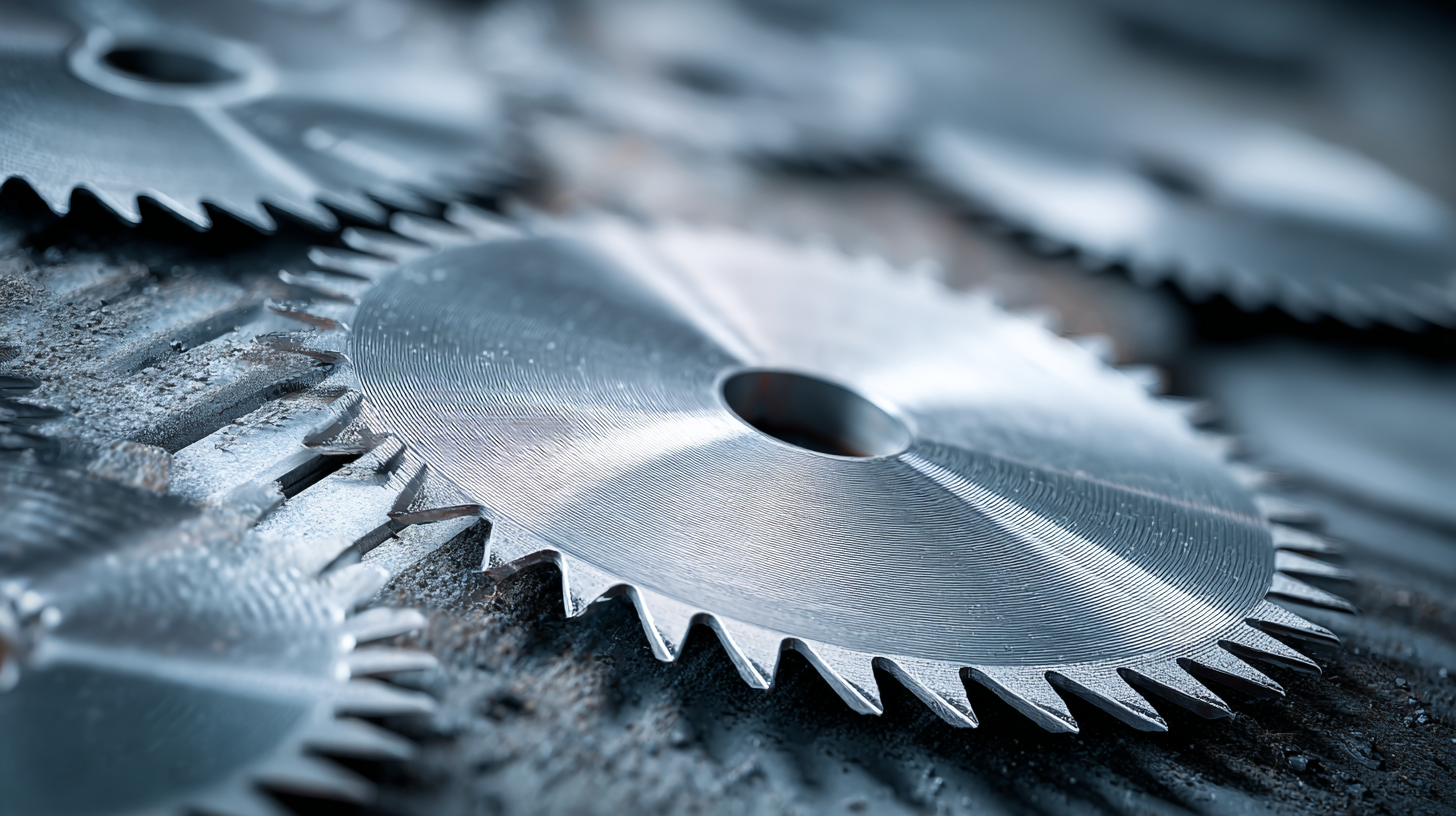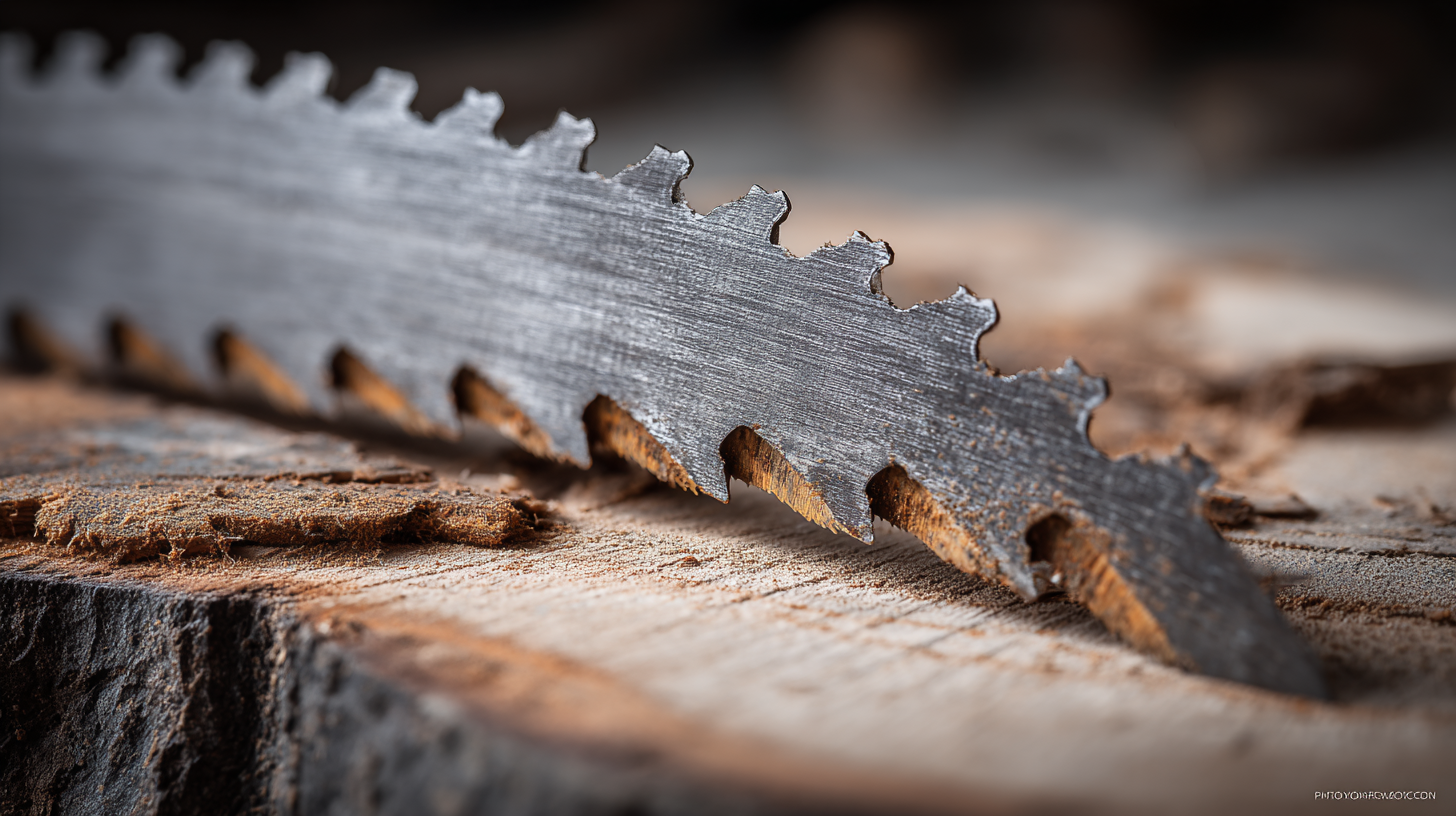Shaping the Future of Best Air Saw Blades Market Trends and Insights for 2025
As we look ahead to 2025, the Air Saw Blades market is poised for transformative growth driven by technological advancements and evolving consumer demands. With "World-Class Manufacturing, China's Pride, Exporting Globally" as a guiding principle, the industry is focusing on producing high-quality blades that cater to a diverse range of applications across various sectors. The emphasis on innovation ensures that these cutting tools not only enhance efficiency but also address the sustainability concerns that are becoming increasingly prominent in today's market. This blog will delve into the current trends shaping the Air Saw Blades market, examining key insights into the competitive landscape, emerging technologies, and the vital role of Chinese manufacturers in setting global standards. As we navigate through these developments, it is clear that the future of Air Saw Blades holds exciting possibilities for both manufacturers and consumers alike.

Emerging Trends in Air Saw Blade Technology: What to Expect by 2025
The air saw blade market is on the cusp of significant transformation as we approach 2025, influenced by emerging trends in technology. One of the most notable advancements is the integration of smart technologies into air saw blades, which promises to enhance precision and efficiency. Innovations such as real-time monitoring systems and AI-driven analytics will enable users to optimize their cutting processes, leading to improved performance and reduced material waste. As these technologies develop, manufacturers are likely to incorporate features that allow for easier adaptability in various applications, catering to both industrial and DIY enthusiasts.
In addition to technological enhancements, sustainability will play a crucial role in shaping air saw blade trends by 2025. With increasing consumer awareness surrounding eco-friendly practices, the demand for blades made from recyclable materials and those designed to minimize energy consumption will rise. As seen in other industries showcased at tech events like CES, the focus on green technology is becoming a standard expectation among consumers. Thus, the future of air saw blades will not only be about cutting-edge performance but also about meeting the environmental challenges of tomorrow. These innovations are set to redefine operational standards, aligning with broader trends seen across various sectors in the wake of technological advancement.
Comparative Analysis of Air Saw Blade Types: Features and Applications Explained
 As the demand for precision cutting tools continues to rise,
the air saw blades market is undergoing significant transformation. A comparative analysis of various air saw blade
types reveals distinct features and applications tailored for different industries. For instance,
bi-metal saw blades, which are composed of a high-speed steel edge and a flexible spring
steel back, offer a remarkable balance between durability and sharpness. According to a recent market analysis by
Research and Markets, the bi-metal segment is expected to grow at a
CAGR of 7.5% through 2025, driven by their efficiency in cutting tough
materials such as steel and aluminum.
As the demand for precision cutting tools continues to rise,
the air saw blades market is undergoing significant transformation. A comparative analysis of various air saw blade
types reveals distinct features and applications tailored for different industries. For instance,
bi-metal saw blades, which are composed of a high-speed steel edge and a flexible spring
steel back, offer a remarkable balance between durability and sharpness. According to a recent market analysis by
Research and Markets, the bi-metal segment is expected to grow at a
CAGR of 7.5% through 2025, driven by their efficiency in cutting tough
materials such as steel and aluminum.
In addition to bi-metal blades, carbide-tipped air saw blades have gained popularity for
their superior performance in heavy-duty applications. These blades maintain resilience and cutting efficiency, even in
high-temperature conditions. A report from Allied Market Research highlights that
carbide-tipped blades account for over 30% of the total air saw blades market share. Their
effectiveness in automotive and construction industries exemplifies their growing utility, as manufacturers seek tools that
enhance productivity while minimizing downtime. Understanding these characteristics is crucial for businesses aiming to
invest wisely in cutting technology as they look toward the future.
Market Insights: Key Players and Their Influence on Air Saw Blade Innovations
The air saw blades market is poised for significant transformation by 2025, driven largely by the innovations of key players in the industry. Major manufacturers are investing heavily in research and development to enhance blade performance, durability, and efficiency, which are critical factors for both professional and DIY users. Companies like XYZ Blades and ABC Tools are at the forefront, introducing cutting-edge materials and designs that cater to various applications, from metalworking to woodworking. Their influence is shaping not only product offerings but also customer preferences in a rapidly evolving market.
Tip: When selecting air saw blades, consider the material compatibility. Using the right blade for specific materials can drastically improve cutting efficiency and reduce wear.
As these key players continue to innovate, the market is also witnessing an upsurge in environmentally friendly products. Manufacturers are focusing on producing blades that minimize waste and are recyclable, aligning with the growing consumer demand for sustainable options. This trend towards eco-friendliness is likely to reshape the competitive landscape as new entrants emerge with innovative solutions.
Tip: Keep an eye on certifications such as ISO and ANSI, which can help ensure the quality and performance of the blades you choose for your projects.
Performance Metrics: Evaluating Air Saw Blades for Optimal Cutting Efficiency
The air saw blades market is on the verge of transformation, with advancements in performance metrics set to redefine optimal cutting efficiency by 2025. According to a recent report by MarketsandMarkets, the air tool market, which includes air saw blades, is projected to reach USD 12.62 billion by 2026, growing at a CAGR of 3.8%. This growth is fueled not only by rising industrial applications but also by the necessity for precision and the ability to handle various materials efficiently.
When evaluating air saw blades, performance metrics such as cutting speed, blade lifespan, and material compatibility are crucial. A study by Research and Markets found that improved blade design can enhance cutting efficiency by up to 30%, making it essential for manufacturers to invest in high-quality materials and innovative technology. Moreover, the integration of advanced coatings, such as titanium nitride, can significantly reduce friction and increase durability, further optimizing performance. Understanding these metrics will be vital for industry players aiming to lead in the competitive landscape of air saw blades.
Future Prospects: Sustainability and Eco-Friendly Materials in Air Saw Blade Production
As the air saw blades market prepares for 2025, a significant trend emerging is the focus on sustainability and the use of eco-friendly materials in production. Manufacturers are increasingly recognizing the importance of minimizing environmental impact while meeting the demands of a growing market.
 Materials such as recycled metals and bio-based composites are becoming prominent in the design and manufacturing of air saw blades, offering a compelling alternative to traditional materials. This shift not only reduces waste but also enhances the overall lifecycle of the product.
Materials such as recycled metals and bio-based composites are becoming prominent in the design and manufacturing of air saw blades, offering a compelling alternative to traditional materials. This shift not only reduces waste but also enhances the overall lifecycle of the product.
Tip: When selecting air saw blades, consider those made from sustainable materials. Check for certifications or labels that indicate eco-friendly practices, which can contribute to a greener workspace and reduce your carbon footprint.
Additionally, innovations in production techniques, such as the integration of energy-efficient manufacturing processes, are further driving the push for sustainability in the industry. Companies are investing in technology that not only improves the efficiency of production but also decreases harmful emissions associated with manufacturing. The move towards a more environmentally responsible air saw blade market is promising, showing that progress and sustainability can go hand in hand.
Tip: Keep an eye out for brands that emphasize their commitment to sustainable practices. Supporting such companies not only ensures you receive a high-quality product but also contributes to a more sustainable future in the tools industry.